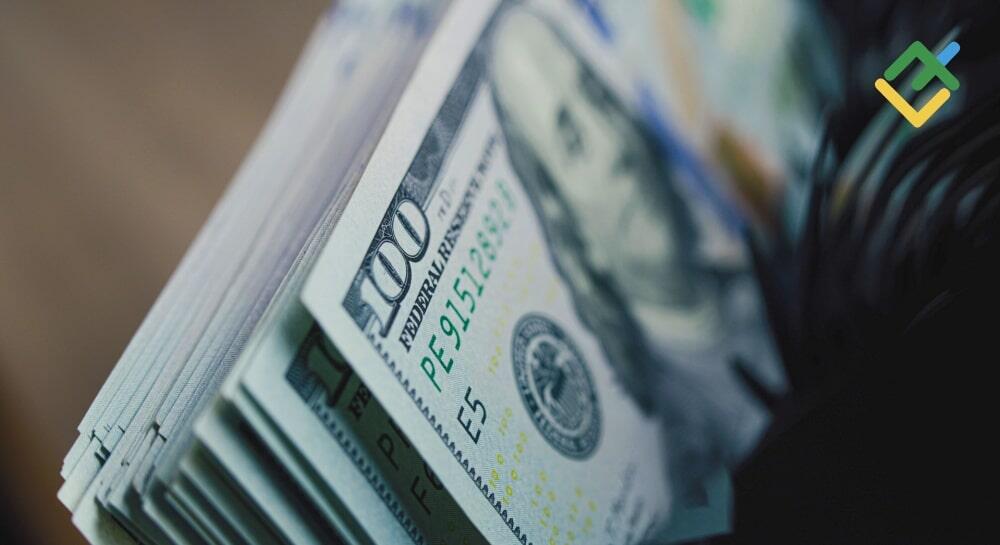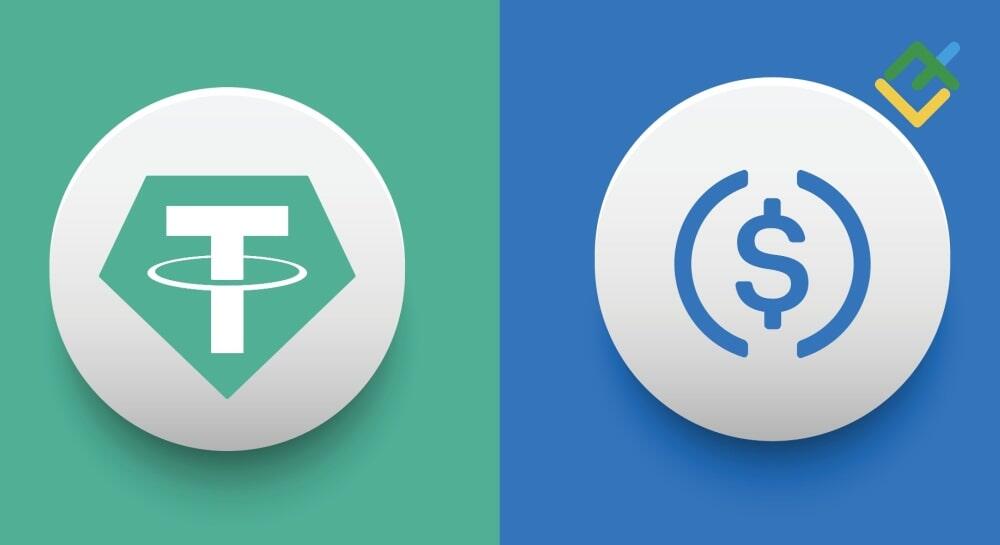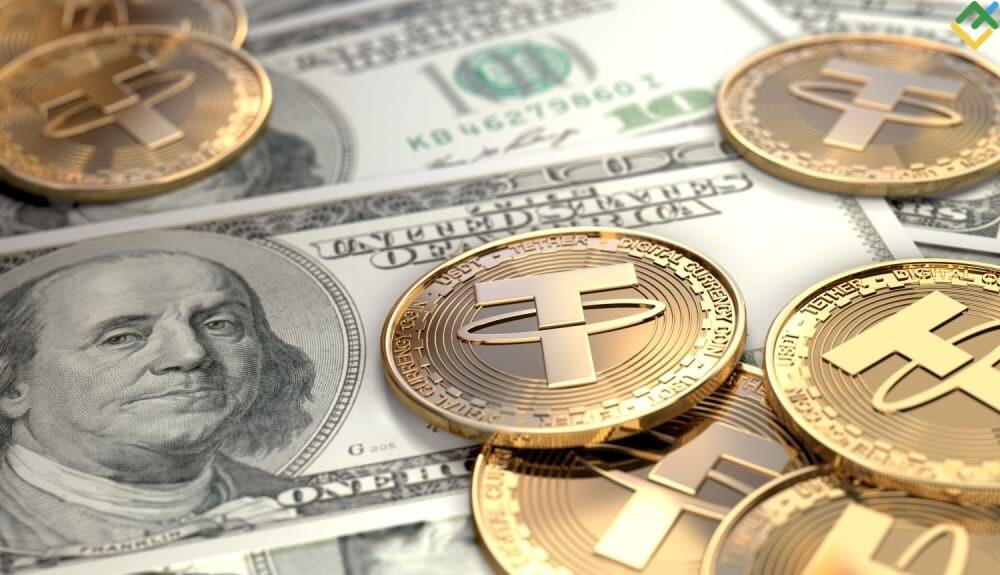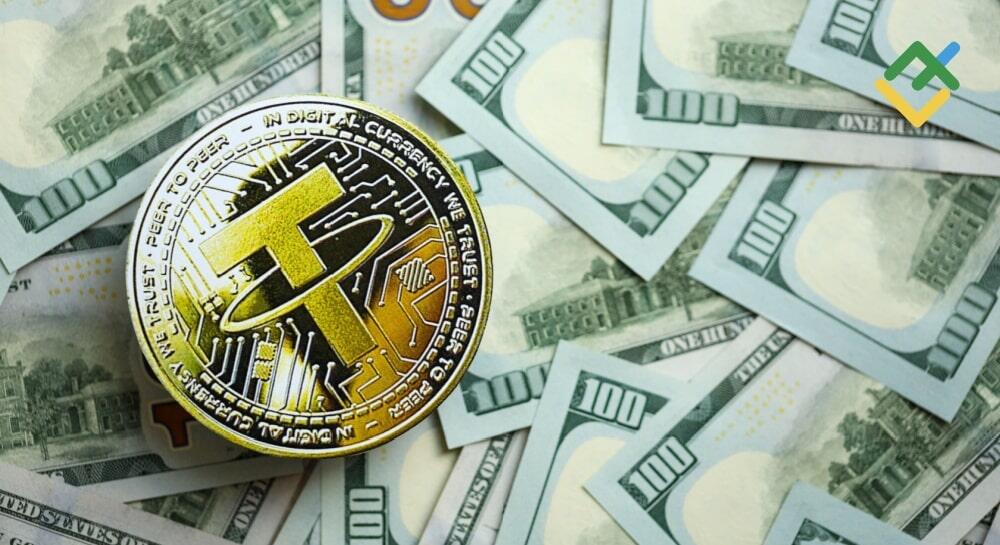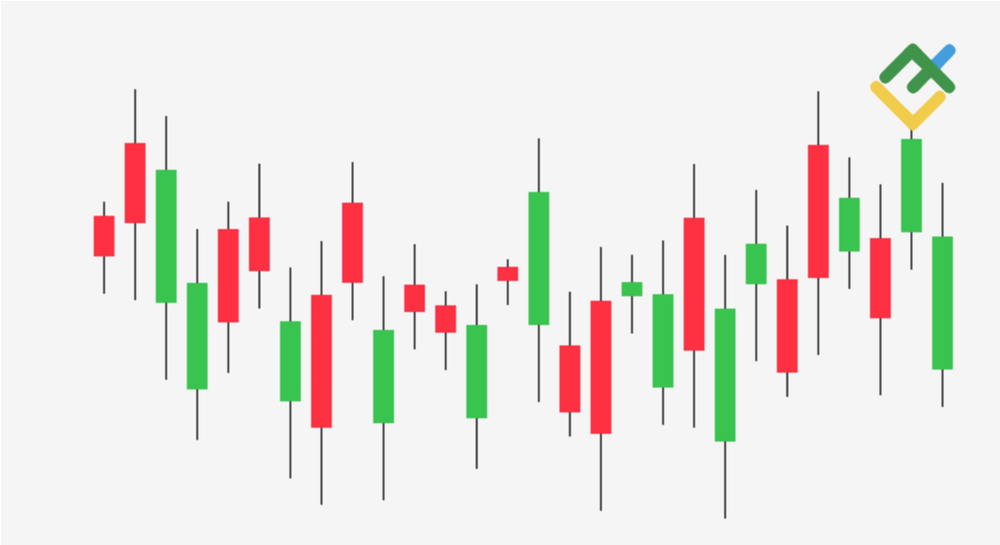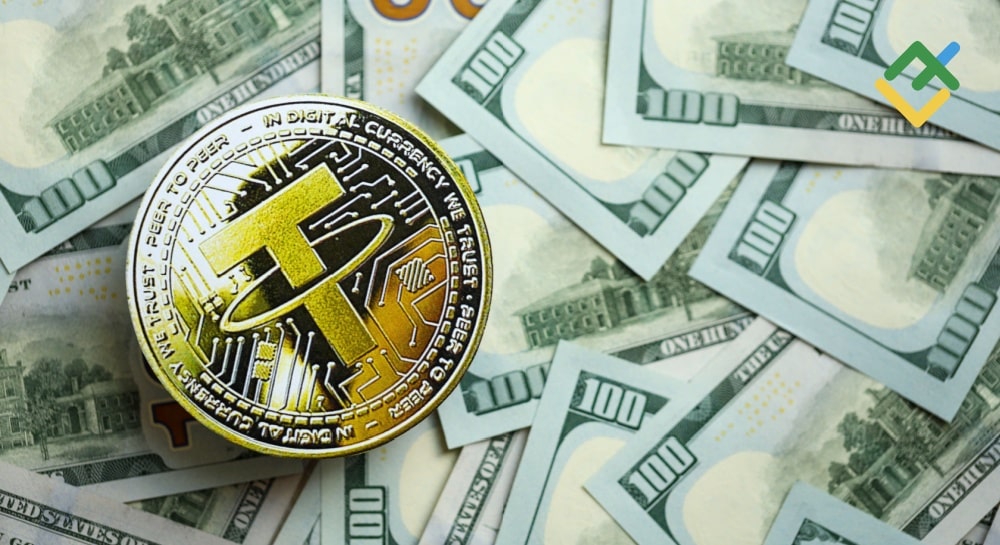
Despite sharing similar names, the USD and USDT are two completely distinct assets. The US dollar serves as the bedrock of the global financial system. The currency is the primary means of payment in the United States and a crucial safe-haven reserve currency used for international settlements.
Tether (USDT) is a stablecoin created by Tether Limited to mitigate the inherent volatility of cryptocurrencies. Its primary attribute is its direct correlation with the US dollar, which enables the token to retain a consistent value.
This article examines the differences between the USD and USDT, as well as the advantages and disadvantages of each asset, and provides guidance on how they can be used.
The article covers the following subjects:
Major Takeaways
- The US dollar (USD) is a fiat currency officially issued by the US government and recognized as legal tender.
- Tether (USDT) is a stablecoin issued by Tether Limited. Its exchange rate is pegged to the exchange rate of the US dollar.
- The US dollar is utilized in the traditional economy to purchase goods and services, whereas USDT is designed for trading and storing value on cryptocurrency exchanges.
- USDT provides users with the benefits of digital liquidity and ultra-fast transaction speeds.
- The primary objective of the Tether project is to eliminate excessive volatility, which is inherent in most cryptocurrencies, by linking it to a stable fiat currency.
- The USD is backed by the government, while USDT is backed by a private company, resulting in differences in regulation and credibility.
- Tether is a popular choice among traders looking to convert cryptocurrencies into a more stable asset without withdrawing their funds into fiat currencies.
- Both assets serve crucial yet distinct roles in the global financial system and the cryptocurrency market.
What Is the USD?
The US dollar, or the USD, is the official legal tender in the United States of America. It is one of the world’s most popular and widely used currencies, accounting for approximately 60% of global reserves. The dollar is used as a reserve currency by central banks in over 140 countries and serves as an underlying currency for international trade settlements, representing about 40% of global payments.
The US dollar is a key player in the global financial system due to its rock-solid stability. It is actively used in global financial transactions, international trade, and investment. As of 2023, there was approximately $2.3 trillion in cash in global circulation, underscoring its crucial role in providing liquidity. The US currency also serves as a benchmark for setting exchange rates and settlements between countries, making it an indispensable cornerstone of the global financial system.
What Is USDT (Tether) and How Does It Work?
Tether or USDT is a stablecoin issued by Tether Limited. It was launched in 2014 and represents a type of digital asset that employs an asset-pegging mechanism. USDT is pegged to the US dollar, so each token is backed by an equivalent amount of US dollars in reserve.
In contrast to most cryptocurrencies, the price of USDT is more stable and less prone to volatility. It is often used on cryptocurrency exchanges for trading and savings, allowing users to convert volatile digital currencies such as Bitcoin or Ether into such a stable and reliable asset as USDT.
Disadvantages of USDT
Most stablecoins, including USDT, suffer from a number of common issues. Tether Limited has not been able to win the trust of users due to the lack of transparency regarding the reserves backing the token. The company has been repeatedly criticized on the grounds that there is a lack of clarity surrounding the question of whether there are sufficient cash reserves to cover all issued USDT tokens fully.
Furthermore, the centralized nature of USDT renders it exposed to the actions of the issuing company. As all transactions are subject to the discretion of Tether Limited, users may encounter complications should the company amend its policies or encounter regulatory constraints. Centralization increases the risk of manipulation and limits the availability of the token, which diminishes its attractiveness in the market.
Stablecoins are more susceptible to regulatory risks than other financial instruments. Many countries are exploring the possibility of adopting stringent control measures, viewing stablecoins as a potential threat to traditional financial institutions and national currencies. It is possible that regulatory changes may make it more challenging to use stablecoins or even restrict their circulation in certain jurisdictions.
Platform where traders earn more
Trade on LiteFinance’s high-tech ECN platform and open an account so that beginner traders can copy you. Earn a commission for copy trading and boost your income.
Comparative Stability
The US dollar is a government-backed legal tender in the United States, offering unparalleled stability as an asset. The US dollar’s price stability is ensured by the country’s economic strength, the US Federal Reserve, and strict government regulation.
USDT is designed to maintain stability through its peg to the US dollar. However, its ultimate success depends on trust in Tether Limited, transparency of reserves, and the volatility of the crypto market. In addition, USDT may be vulnerable to regulation and centralized governance, so the US dollar is a more reliable asset in the long run.
Trading Flexibility of the USD and USDT
The United States dollar is the primary currency used in traditional economies for international settlements, trade, and savings. It is also the world’s most widely used reserve currency, with central banks holding it as a key asset. Due to its stability and government backing, the US dollar is a highly sought-after currency in global financial transactions.
Tether is the largest stablecoin in the world. It is widely used on crypto trading platforms, offering a convenient solution for trading and storing value. It is particularly suited to situations where a quick switch between cryptocurrency and a more stable equivalent is needed. USDT is also used to protect capital from the inherent volatility of digital assets, as it is pegged to the US dollar’s exchange rate. USDT plays an important role in the world of blockchain transactions, facilitating the rapid movement of funds within the crypto ecosystem.
Yield Opportunities of the USD and USDT
The US dollar provides an opportunity to generate income through traditional bank deposits. Interest rates may vary by country, ranging from 1% to 4.5%. In countries experiencing high inflation, such as Turkey or Argentina, interest rates can soar up to 15%–20%. Despite the allure of substantial returns, these opportunities come hand-in-hand with heightened risks. Economic volatility and diminished consumer purchasing power are key factors contributing to this increased risk. In addition, the effects of inflation frequently erode investment yields in these markets. Nonetheless, putting money into USDT is considered a cautious approach, offering modest gains while minimizing exposure to risk.
USDT offers a potential avenue for earning income within the digital finance ecosystem. One way to do this is through staking, which involves locking up cryptocurrency in a blockchain network, thus providing liquidity in exchange for interest. Potential returns from staking can fluctuate based on the specific platform and its terms, with certain platforms offering rates above 10%. Lending is another option to generate a return, allowing users to loan their USDT holdings to traders through decentralized platforms. However, it is crucial to understand that both strategies carry considerable risk, particularly during periods of elevated market volatility.
The most optimal strategy for income generation hinges on individual risk tolerance and financial objectives. Those who prefer a more conservative path might opt to invest in the USD to safeguard and incrementally grow their capital, whereas others could explore staking or lending using USDT.
What is the Difference Between the USD and USDT?
There are notable differences in the applications and purposes for which USD and USDT are utilized. The US dollar has a legal tender status in the US. The currency is backed by the US government and recognized as an official means of payment worldwide. Tether is a digital stablecoin that was created to minimize volatility and is pegged to the value of the USD. The US dollar is employed in the offline economy and international trade, while USDT is adopted in the crypto ecosystem for trading, savings, and the rapid conversion between volatile crypto assets and reliable currency.
| Factor | USD | USDT |
| Currency type | Fiat currency | Stablecoin |
| Issuer | The USA | Tether Limited |
| Regulation | Strictly regulated by the government | Less regulated |
| Application field | International trade, store of value | Trading on crypto exchanges, staking |
| Reserve support | Supported by the US economy | Backed by the company’s reserves |
| Volatility | Low | Depends on the issuer’s credibility |
| Applications in the crypto industry | Limited | Used widely |
| Liquidity | High | High |
USD vs. USDT: Investment Viability
The US dollar is a fiat currency supported by the government, which makes it an optimal and stable means of saving capital. Investments in the USD carry minimal risk, but the yield is typically limited to deposit interest rates, which usually range from 1% to 4.5% per year. Investing in the USD is well-suited for investors with a conservative investment strategy, where the primary objective is to preserve capital and protect it against inflation.
USDT is a stablecoin that offers opportunities for staking and lending. While this can yield higher returns, it also carries significant risks associated with the volatility of the cryptocurrency market and the centralized nature of USDT issuance. In addition, active traders choose USDT for its high liquidity and fast transactions on cryptocurrency exchanges. Therefore, USDT may be a suitable choice for those ready to accept additional risks for the potential of higher returns and faster transactions within the crypto ecosystem.
How to Obtain USDT
The USD Token (USDT) can be purchased on cryptocurrency exchanges where various digital assets are traded. The following is a step-by-step guide to help you through the process:
- Register with a cryptocurrency exchange. Create an account on one of the popular cryptocurrency exchanges such as Binance, Kraken, or Coinbase. To do this, you should provide your email and create a strong password.
- Verify your account. In most cases, you must verify your identity by uploading copies of documents such as your passport or driver’s license. This step is necessary to comply with KYC (Know Your Customer) rules.
- Top up your account. Once you create an account and verify it, fund your account in fiat currency, for example, in the USD. This can be done via wire transfer or credit/debit card.
- Select a currency pair. Go to the trading platform section and find the USDT/USD trading pair or another pair that suits you best.
- Make a purchase. Enter the amount you want to spend and select the Buy USDT option. Check the order details and confirm the transaction.
- USDT Storage. After the purchase, USDTs will be available in your account on the exchange. You can leave them there or transfer them to your personal cryptocurrency wallet for safer storage.
- After that, you can purchase any cryptocurrency, such as Bitcoin and Ethereum.
Long-term Holdings
The long-term holding of the USD is a strategy aimed at safeguarding capital. The USD offers a relatively low level of risk due to the support provided by the government and central banks. The primary benefit of investing in the US dollar is its reliability and predictability, which is particularly valuable for conservative investors. However, the drawback is the limited potential for returns, as traditional instruments such as bank deposits offer only modest interest rates.
Long-term USDT holdings provide greater flexibility in the cryptocurrency market. It is an efficient solution for hodling digital assets, particularly for those who seek high liquidity and fast crypto transactions. The USD Token (USDT) offers a valuable avenue for diversifying income streams through its versatility in strategies, including staking, which can potentially yield higher returns. However, the main disadvantage is the stablecoin’s dependence on the issuing company and potential regulatory risks, which could erode predictability and stability over time.
Trading
The US dollar is the primary trading instrument on fiat exchanges. It serves as the quote currency in most major currency pairs and offers high liquidity. The US currency is regarded as a reliable benchmark due to the government’s support, making it an attractive option for traders seeking to mitigate risks in traditional financial transactions. The use of the USD enables traders to engage in international trading and invest in various financial instruments, including stocks, bonds, and other assets.
Tether is frequently utilized as a trading instrument on cryptocurrency exchanges, similar to how the USD is employed on fiat exchanges. It offers a convenient method to buy and sell cryptocurrencies promptly, thereby reducing the impact of volatility and hedging risk. USDT enables traders to swiftly transact between volatile assets and stable currencies while remaining within the crypto ecosystem. Moreover, USDT provides high liquidity and serves as a convenient instrument for trading and preserving value in a volatile cryptocurrency market.
Start trading with a trustworthy broker
Lending & Staking
The USD offers a limited range of income opportunities, primarily in the form of traditional bank deposits and bonds. Investors have the option of investing their funds in the USD through bank deposits, which generate returns in the range of 1% to 4.5% per annum, depending on the country and conditions. An alternative investment option is to purchase USD-denominated government or corporate bonds, which also provide stable interest yields with minimal risk.
USDT can be used to generate profits through lending and staking on crypto platforms. Staking allows you to lock up coins on the platform and earn interest, while lending allows you to earn income by loaning USDT to other users. These methods allow investors to receive higher returns, especially when compared to traditional instruments, but they come with risks associated with market volatility and possible technical or regulatory headwinds.
Conclusion
The USD and USDT are two completely distinct assets with their respective advantages and disadvantages. The US dollar is an asset that is well-suited for those seeking stability and security, while USDT offers flexibility and ease of use within the crypto space. The greenback is utilized for traditional savings and international trade settlements, while the USDT is actively employed in crypto exchanges and decentralized financial transactions. When evaluating whether to invest in these assets, it is essential to consider your investment objectives, risk tolerance, and intent to engage in the cryptocurrency market.
USD vs USDT FAQs
No, the USD is a fiat currency issued by the US government, and USDT is a digital stablecoin tied to the value of the US dollar but is not an official government currency.
No, although USDT is pegged to the USD, they are not entirely equivalent. USDT is backed by Tether Limited’s reserves and may be subject to risks related to transparency and trust in the company.
As a rule, the USDT/USD exchange rate is close to parity, though it is subject to fluctuations depending on market conditions and investor confidence in Tether Limited’s reserves.
The US dollar is a government-backed currency that is underpinned by the strength of the US economy. USDT is a stablecoin issued by a private company. It is pegged to the USD exchange rate and backed by the reserves of Tether Limited.
USDT is linked to the USD and ensured by equivalent reserves. However, it is not an official legal tender issued by a private company.
USDT offers a convenient solution within the crypto ecosystem, providing high liquidity, minimal volatility, and seamless conversion between cryptocurrencies, eliminating dependence on traditional fiat systems.
Yes, USDT can be exchanged for the US dollar on cryptocurrency exchanges or through exchange services, allowing users to receive fiat currency in exchange for a digital asset.
The content of this article reflects the author’s opinion and does not necessarily reflect the official position of LiteFinance. The material published on this page is provided for informational purposes only and should not be considered as the provision of investment advice for the purposes of Directive 2004/39/EC.
{{value}} ( {{count}} {{title}} )
This post is originally published on LITEFINANCE.

